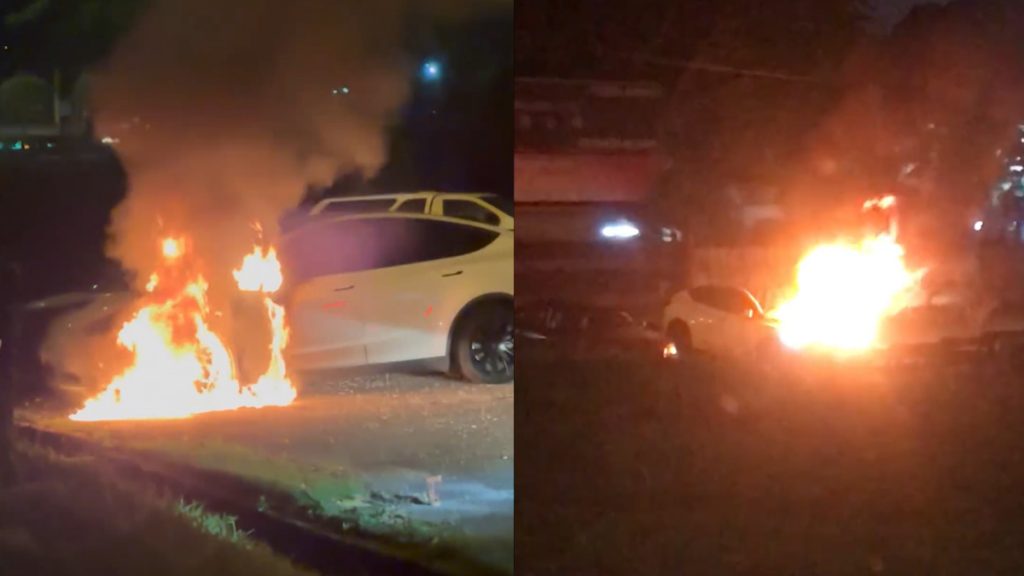No Products in the Cart
Armand Saufi - October 2023
Firefighting the Future:
A closer look at the Tesla Model Y incident
Electric vehicles (EVs) are the future of transportation, offering an eco-friendly alternative to traditional internal combustion engine vehicles. However, as with any technology, EVs come with their own set of unique safety considerations. Recently, a Tesla Model Y fire in Puchong has sparked discussions about the importance of knowing how to deal with EV fires and why specialized firefighting equipment may be necessary. In this article, we will delve into the incident, the differences between EV fires and conventional vehicle fires, and what steps you should take in case you encounter an EV fire.
What happened to the Tesla
Last night (16/10/2023), a video of a white Tesla Model Y on fire near Skypod Residence in Puchong circulated on social media. The incident raised concerns about the safety of electric vehicles. According to the official report, the department received a call regarding the fire incident around 8:32 PM. Seven (7) firefighters from the Puchong Fire and Rescue Station were deployed to the scene and found that 70% of the Tesla Model Y had been engulfed by the flame. There were no passengers inside the vehicle.
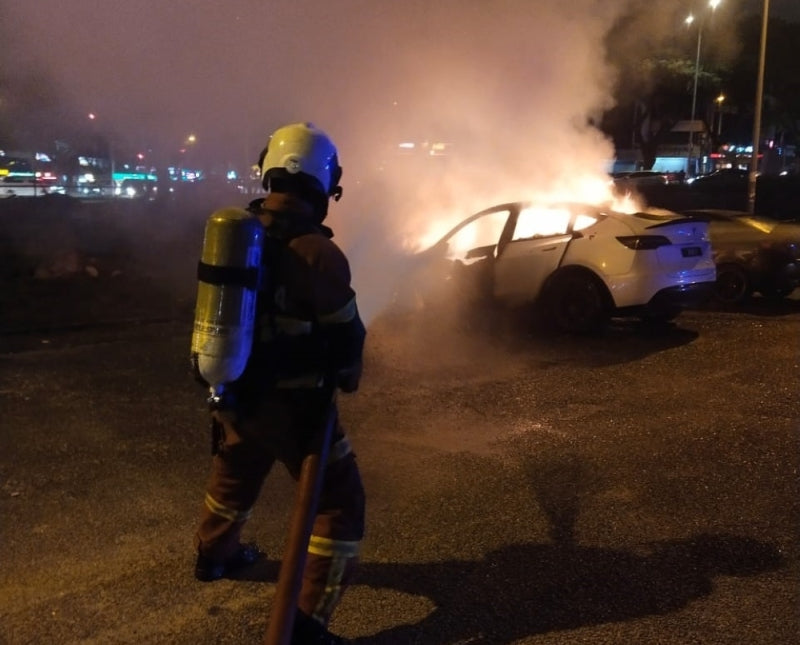
Source: MalayMail
Swift action from firefighters successfully extinguished the fire. Notably, the fire was concentrated around the front end and the left wheel arch of the vehicle. What's critical to understand here is that the Tesla Model Y's batteries (similarly to most electric cars) are located below the floor pan. Initially, the signs suggested that this wasn't a battery fire.
(The case has since been handed over to the Fire and Rescue Department's forensic division for further investigation)

Source: Tesla Model Y Emergency Response Guide
Characteristics of a Lithium ion battery fire
It's essential to recognize that EV battery fires have distinctive characteristics, such as visible jet flames and low-lying white smoke, which were conspicuously absent in this particular incident. Although popping noises (can be heard in the video below) could serve as an early warning sign of a battery fire, it's important to acknowledge that even if it didn't initially involve the battery, any EV fire can potentially escalate into a lithium-ion battery fire due to the battery's proximity to the fire source.
How do lithium ion battery fires occur?
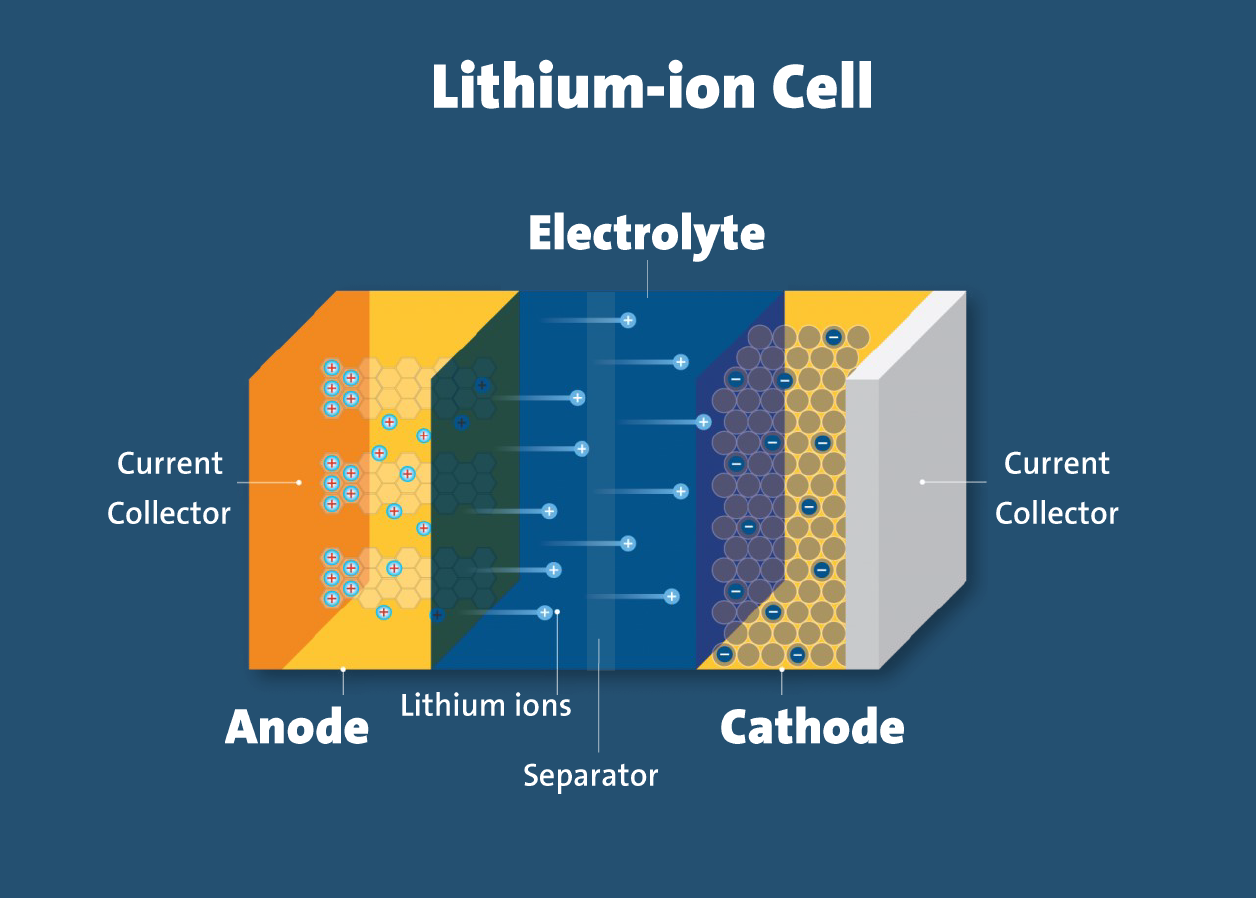
The separator blocks the flow of electrons inside the battery. - Department of Energy
Once the separator has been damaged, a short circuit will occur, as the electrons will be allowed to flow freely
This can occur through either Mechanical abuse (penetration or crushing of the battery), or Electrical abuse (overcharging or short circuiting) - these mechanisms ultimately lead to an increase in temperature otherwise known as Thermal abuse which if not stopped will induce Thermal Runaway, which results in a self-sustaining fire.

EV Fires vs. Conventional Vehicle Fires: What Sets Them Apart?
Electric vehicle fires present unique challenges when compared to fires in traditional internal combustion engine vehicles. According to the National Research Council of Canada, Lithium ion battery fires from Electric Vehicles burn at temperatures in excess of 1000°C. During an EV fire, the heat generated can cause the battery to expand, releasing flammable electrolytes and gases, making it harder to extinguish. EV fires tend to burn for more extended periods, emitting toxic gases like hydrogen fluoride, which pose health risks to humans and animals. These fires can even continue burning for days or weeks, elevating the risk of re-ignition.
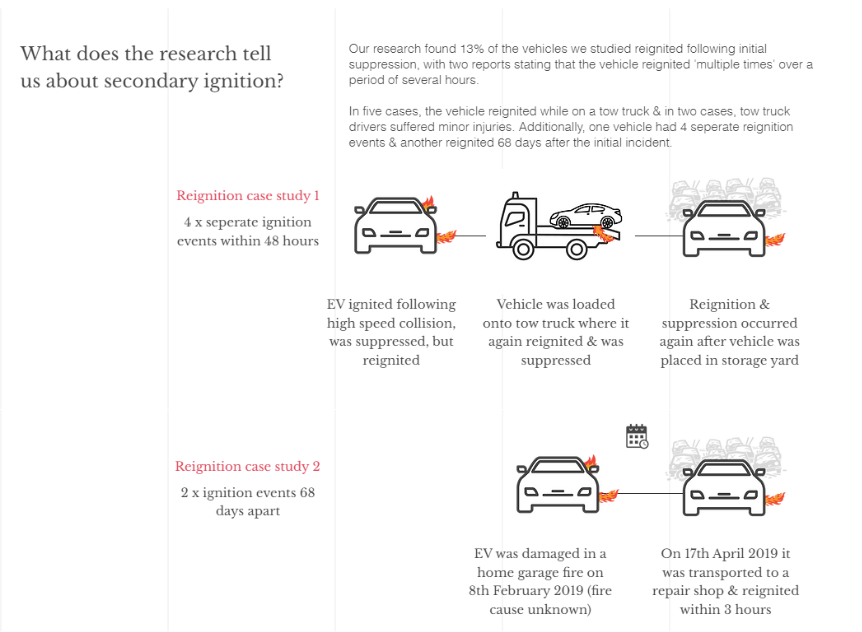
Source: evfiresafe.com
When you see an EV car on fire!
Imagine you're a passer-by and you see an EV on fire. As a good samaritan here are a few things you can do to help your fellow human!
1. Park your car away from the flaming car
As with any vehicle fire, the safety of individuals should be the top priority. Ensure everyone is safely evacuated from the vehicle and the surrounding area, maintaining a safe distance to avoid toxic fumes and any potential chain reactions.
2. Contact BOMBA (Call 999)
Tell them the location of the incident
*Don't forget to notify them that it is an EV fire*.
This is because the people in the burning car might leave their phones and wallets inside in a hurry. If possible, try to cantact the traffic police as well. They will help in alerting the oncoming traffic about the incident.
3. Use an emergency warning triangle
Use the Emergency warning triangle or the double indicator to let the vehicles behind you know that there's an accident ahead.
Note for people just driving by:
Don't slow down just to see a car on fire, either stop and help or just drive away. Slowing down to see what's happening will only contribute to the traffic and may endanger the lives of many.
Stranded Energy
Be aware of stranded energy - Stranded energy is the energy remaining inside any undamaged or damaged battery following an accident. Even after extinguishing the initial fire, there's a risk of re-ignition, which can occur hours or even days later. Therefore, the involved vehicle should be monitored cautiously.
The Tesla emergency response guide suggests monitoring the battery temperature for at least 24 hours.
The Need for Specialized Firefighting Equipment
To stop thermal runaway in an electric vehicle, water or other solutions must be applied inside the battery pack. However, the battery pack is sealed, making it impossible for firefighters to gain access. While an opening may be created during a thermal runaway, it is still difficult to get water inside. Fire departments have used between 10,000 to 15,000 litres of water to extinguish electric vehicle fires, almost 10x more than the amount used for a traditional car fire, not to mention that this water must be treated as hazardous waste after the incident due to the toxicity level.
Given the unique challenges posed by EV fires, there is a clear need for specialized firefighting equipment tailored to address these incidents. Specifically, it's crucial that authorities, like the Fire and Rescue Department of Malaysia (BOMBA), consider incorporating water cutting extinguishers into their firefighting arsenal to combat EV fires more effectively. These tools can extinguish EV fires in as low as ten minutes with minimal water use due to their ability to directly access the inside of the battery pack and flood it with water.
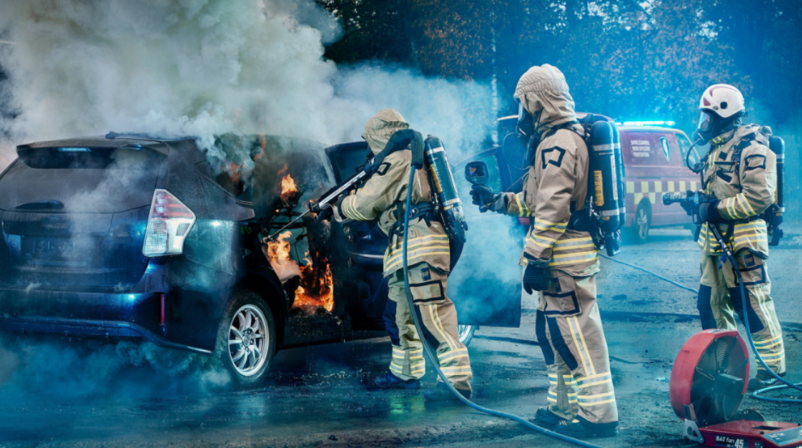
Source: ctif.org
Preparing for an EV Future
With the increasing adoption of electric vehicles and the proliferation of EV charging stations, there is a growing need for fire safety equipment designed to meet the guidelines set by fire authorities (BOMBA).
EV fire blankets will play a pivotal role in mitigating potential fire hazards and enhancing safety in a world where there will be multiple electric vehicles parked and/or charging side by side, creating the possibility for a chain reaction.
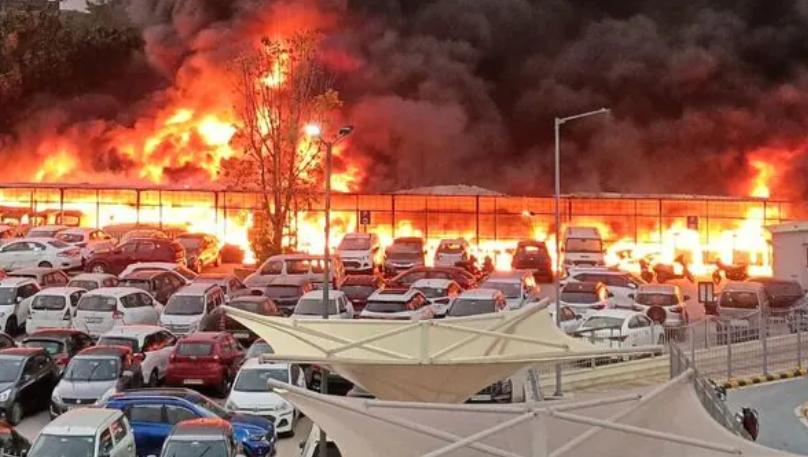
Source: Hindustan Times
Pictured: Fire involving 93 electric vehicles in Main Tikona Park, Delhi, India (8 June 2022)
Conclusion
In conclusion, comprehending the intricacies of EV fires is paramount for ensuring public safety in an electrified future. While such incidents are relatively rare, it's imperative to be prepared and have the right tools at hand. By advocating for specialized firefighting equipment and promoting fire safety measures tailored for an EV future, we can protect lives and property as we embrace this evolving technology. Remember, knowledge is the first line of defense in any emergency, and safety should always be our foremost concern.




